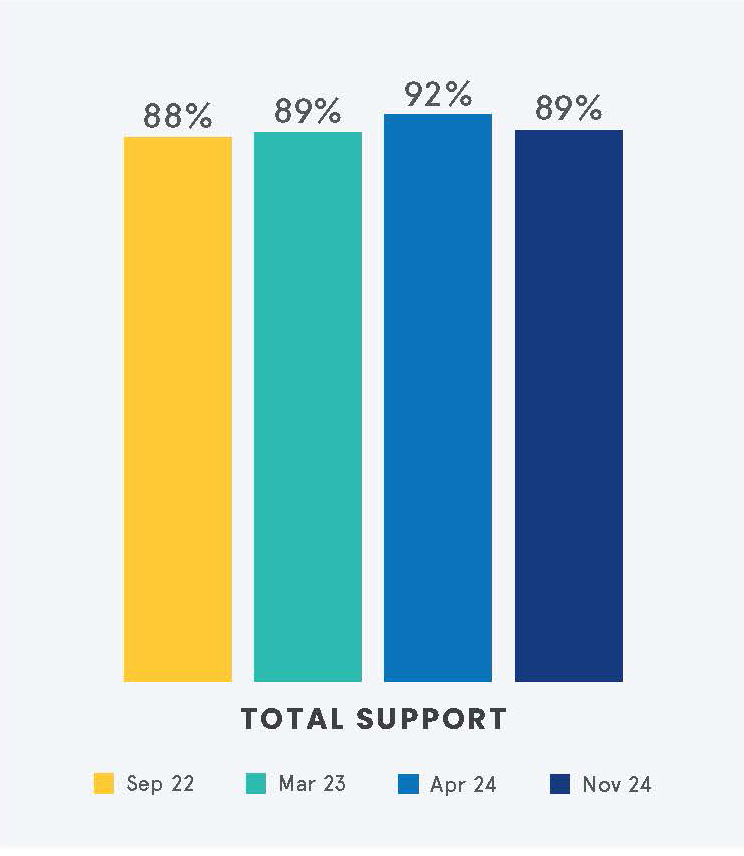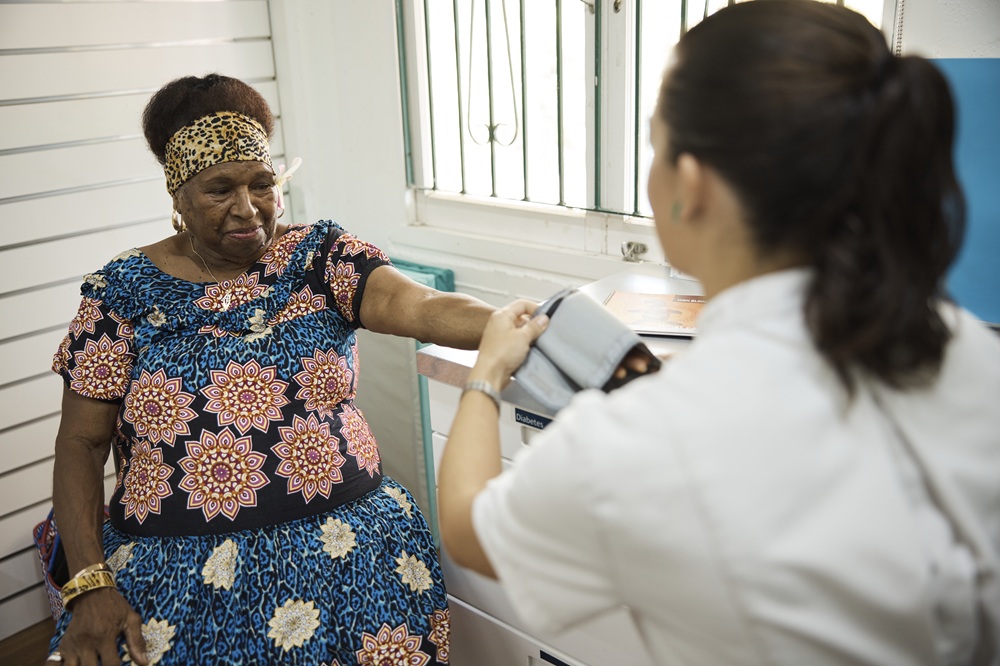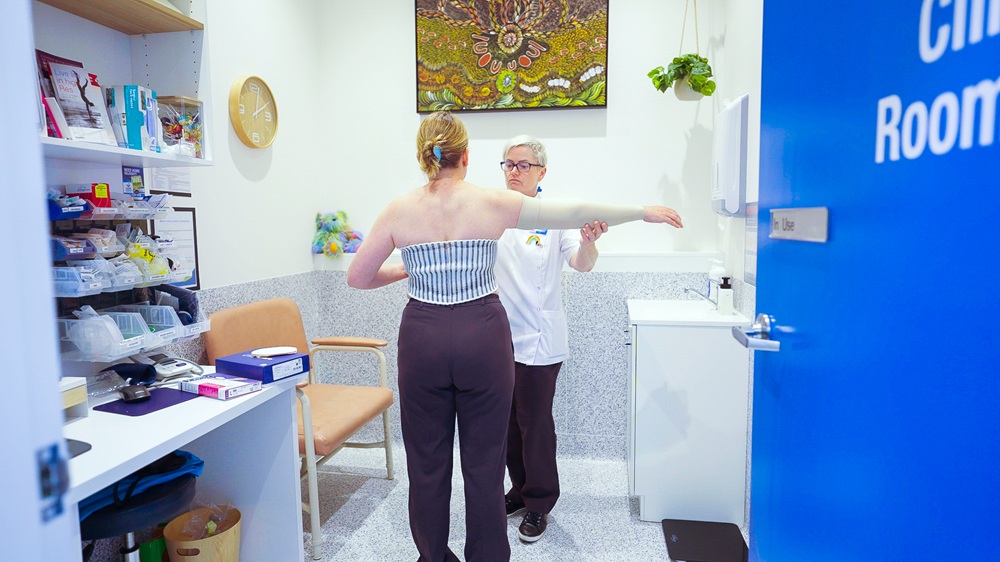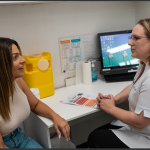At Insightfully, we’ve been tracking the views of Australians towards pharmacy full scope of practice for the past five years. Since 2020 we’ve conducted more than 11,500 qualitative and quantitative research interviews with Australians to understand their evolving views of full scope. First research started in March 2020 in Queensland (the first trial state for full scope) and nationwide tracking began in September 2022.
The full scope of practice program has required significant engagement with governments at the state and federal level in Australia, so the research was undertaken among registered voters, who make up about 93% of the Australian adult population.
Support for full scope of practice
Full scope of practice patient support - national trend
Support for full scope has remained steady since the first nationwide benchmark in September 2022 [see graph]. In that original nationwide track, 88% of Australian voters supported community pharmacists being able to provide more health services to their patients, provided they are trained and follow professional standards and guidelines. In the most recent national track in November 2024, support was almost the same at 89%.
This public support for full scope shows that the community is welcoming the program as they hear more about it and are gradually provided access to more and more services from their community pharmacists. In fact, in Queensland, where full scope is arguably most advanced, public support has increased. Early in the program, 84% of Queenslanders supported the program; this increased to 88% as Queenslanders had more access to full scope services.
It’s human nature to be sceptical or concerned about something new; this research demonstrates that patients become more comfortable with full scope over time and are likely to become more comfortable as they access these services more and more.
Evolving healthcare system
Community pharmacists in Australia can be confident in embracing full scope of practice services in an evolving healthcare system. Patients are feeling the pressure of reduced access to traditional health services such as general practitioners and emergency departments and are looking for more timely and convenient ways to access healthcare.
In our most recent national track in November last year, we found that now, more than a third of Australians (37%) are waiting longer than what they deem is acceptable to get an appointment with their GP. Furthermore, nearly one in five (19%) had been forced to visit the Emergency Department at some point over the past three years because they could not get timely access to their GP.
This further highlights the need for community pharmacy to evolve to meet the changing needs of patients as traditional healthcare access becomes constrained.
Naturally, again due to that hesitancy about the unfamiliar, patients are more comfortable receiving some services from pharmacists than others. For example, patients are more comfortable receiving vaccinations and anti-virals for influenza than they are having pharmacists diagnose and treat common ENT infections. However, even for the pharmacist services patients are less familiar with, comfort levels are still very high. 72% of patients are comfortable receiving ENT diagnoses and treatment, and this is likely to increase over time.
Placing value on time and convenience
Finally, and perhaps most importantly for community pharmacists navigating the business implications of introducing these new services, our research shows many patients are willing to pay to have timely and convenient access to these services rather than waiting for an appointment with a GP, for example, that might be days or weeks away.
When planning how to roll out these paid services to patients in the most effective way for the business bottom line, it’s worthwhile pharmacy owners knowing that some cohorts are significantly more willing to pay than others. Our research found that more time-poor groups such as women between 35 and 54 years of age are 7% more likely to pay for these services from a pharmacist than the average patient. And older patients with more time on their hands, such as over-55s are more willing to wait for a lower-cost option.
While it will be important for pharmacy owners to target full scope services to those who most need them, one thing is certain: patients are clearly supportive of accessing a broader range of services from their community pharmacist.













